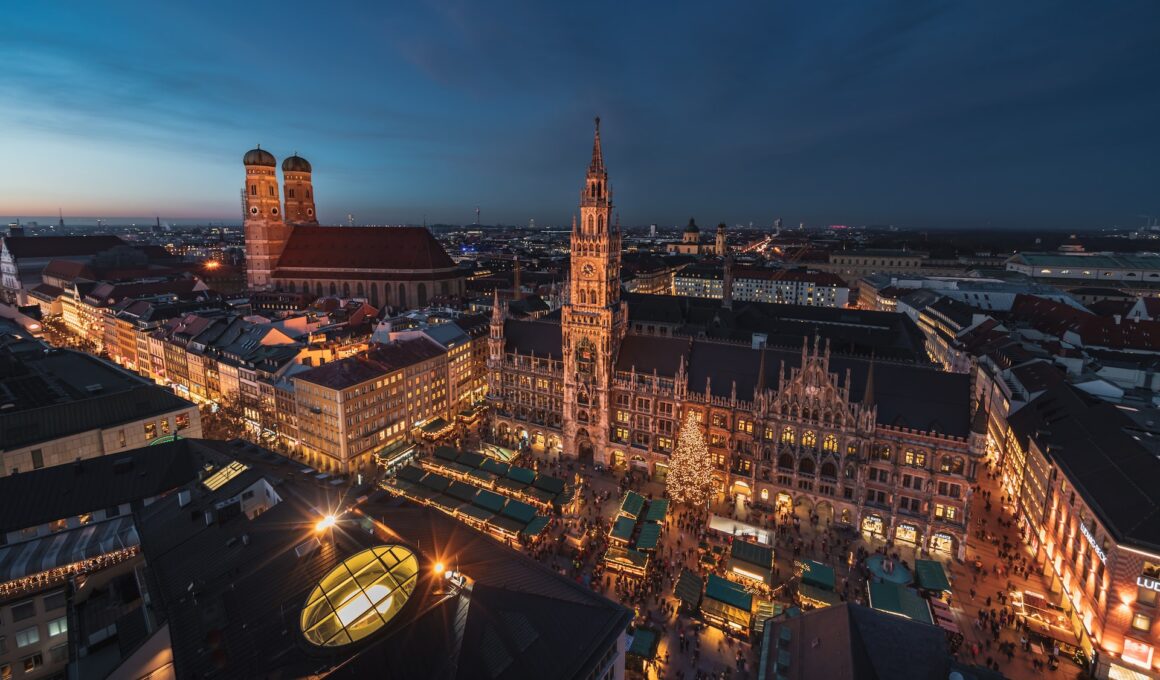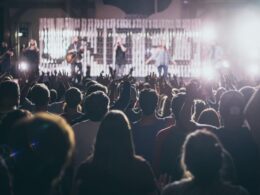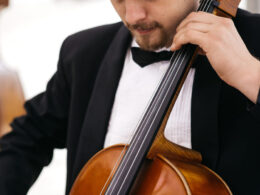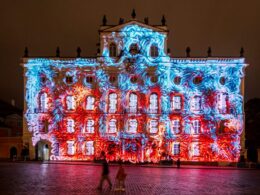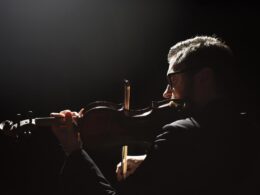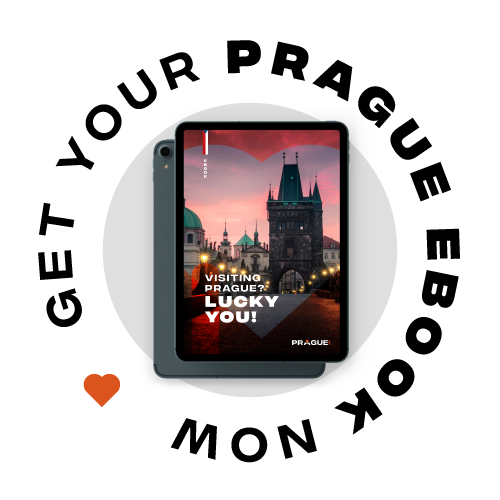Table of contents Show
In search of a good time and some fantastic historical cities in Central Europe but need help deciding between Berlin, Prague, Vienna, and Munich? Settle for a tour to Prague and take in the magic, refinement, and opulence of Central Europe. You will thank us later!
We understand that picking one of these four cities is not easy. This is when we enter the picture!
Berlin is home to many attractions, including a modern art museum, a film studio district, and beautiful gardens. Travel back in time to the early middle ages in Europe in the city of Prague, whose historical landmarks were mostly spared destruction during World War II. Allow your mind to wander as you take in the breathtaking cityscape.Then experience the lush, pure, fresh air and water in Vienna, the city of music set in the countryside along the Danube River. And finally head to Munich for many delicious Bavarian beers, sausages, and pastries.
Find out what makes each city special and why a trip to Prague will be the highlight of your European vacation.
Comparison Between Berlin, Prague, Vienna, and Munich
Touring Berlin
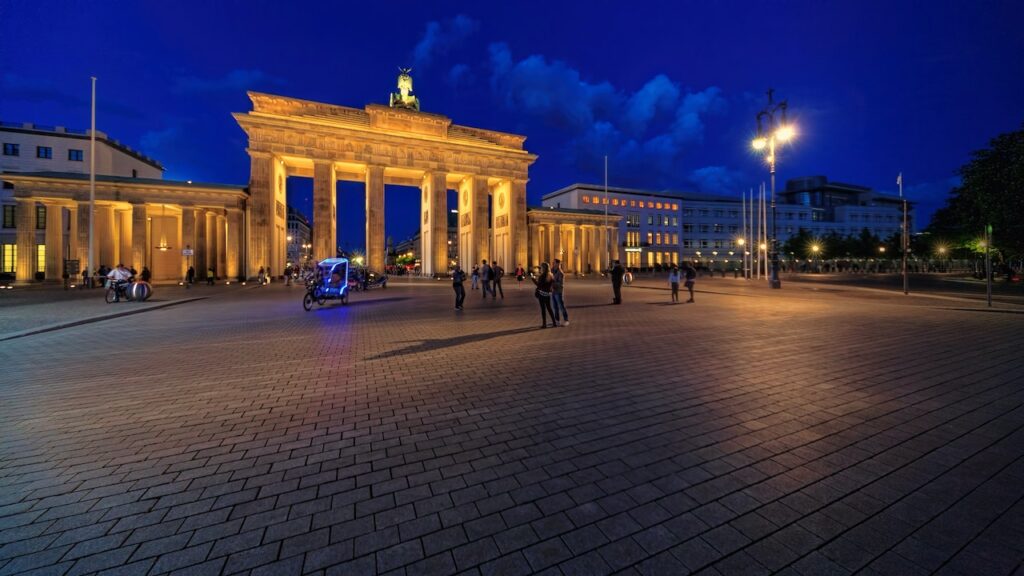
Berlin, Germany’s capital, is well-known for its impressive variety of landmarks, thriving cultural scene, and hectic yet laid-back style of life. The past and the present are mixed together, as seen by the coexistence of historic and contemporary structures.
Cost of Living
Food in Berlin can range from €40 (about $48 USD) to €60 (about $90 USD) per day. The average price for supper is about €16 (or $19 USD) per individual, according to historical data. The cost of breakfast often falls below that of lunch and dinner.
In Berlin, a three-star hotel room will run you at least €3,975, with the most expensive going for €20,966.
Best Neigbourboods in Berlin
Mitte (City Centre)
The best place for traditional tourists to stay in Berlin is within the Mitte neighborhood. Neighborhoods in Mitte include Alexanderplatz, Potsdamer Platz, Nikolaiviertel, and Unter den Linden. You can locate both tourist traps and hip hangouts here: stores, cafes, eateries, and nightclubs
Prenzlauer berg
Located just to the north of Mitte, this hip neighborhood is known for its tree-lined, cobblestone streets, where you’ll find a variety of unique boutiques, cafes, and eateries. There aren’t a ton of sights to see, but the relaxed vibe is perfect for children and anyone out for a stroll through the city.
Kreuzberg
If you’re looking for something different, head to East Kreuzberg, West Berlin’s punk mecca of the ’70s. There are numerous bars and clubs in the neighborhood, making it one of the best places to stay in Berlin if you want to enjoy the city’s vibrant nightlife. The area to the west, around Bergmannstrasse, is peaceful and beautiful.
Best Restaurants in Berlin
Kin Dee
Kin Dee, hidden away in Berlin’s beautiful Tiergarten, serves up eight-course sampling menus of modern Thai cuisine, with dishes such as fried octopus krapoa and tamarind chicken salad. The decor is minimalist, the food is fresh, and practically everything used is sourced within the country.
The Grill Royal
Located in Berlin’s Mitte neighborhood, underneath a bridge, is the hip and happening nightclub known as Royal. Massive in size, the walls are decked out with anything from a full-scale replica of a rocket to pictures of women. The steak is considered one of the finest in town, so ordering it is a bold statement.
What to do in Berlin
Several of Europe’s most interesting tourist attractions can be found in Berlin, thanks to the city’s turbulent history of ideological conflict. Visit the historic sites of the Berlin Wall, the beautiful Reichstag (Parliament) Building, and the tranquil Tiergarten Park. You also can take in the many cultural, architectural, and natural wonders by foot or bike. You shouldn’t miss Museum Island if you’re interested in seeing a UNESCO World Heritage site.
Languages Spoken in Berlin
German is the country’s official language, and its native tongue for more than 95% of the inhabitants. In the eastern part of the country, 0.09 percent of the population speaks Sorbian, whereas in Nordfriesland, 0.01 percent of the population speaks North Frisian and about 10,000 individuals speak it as their native tongue.
Currency used in Berlin
The Euro is the de jure money of Germany and the capital city of Berlin. An individual Euro can be broken down into 100 cents. Euro coins come in denominations from 1 cent to 2 euros, as well as one, two, five, ten, twenty, and fifty cents.
Touring Prague

The typical tourist attractions, such as Prague Castle, the Astronomical Clock, and Charles Bridge, are all there, but even after you’ve seen these, you’ll find enough to do in the city. It would be unlikely to get bored in this city, what with all the great places to eat, the parks scattered around, and the virtual reality and museums.
Cost of Living
Compared to other popular European destinations such as Paris, Berlin, and Amsterdam, the capital of Czech republic is a steal. You may get a lot of value for your dollar here, despite the fact that Prague is the most costly city in the Czech Republic, at least by western standards.
Costs for food, lodging, transportation, and entertainment average between $350 and $750 a month.
Best Neighbourhoods in Prague
Staré Město is crowded because it’s home to Prague’s top attractions. Old Town Square contains some of Europe’s finest architecture, such as the Old Town Hall including its Astronomical Clock. Popular Prague Jewish Quarter is nearby. Eastward, you’ll reach Charles Bridge‘s stone arches.
At first sight, Nové Město crowded shopping lanes don’t scream culture. By exploring the alleyways near Wenceslas Square, you’ll find arcades that indicate the neighborhood’s interesting and autonomous aspect.
The National Museum is the cultural giant, boasting a fantastic natural history collection and beautiful Neo-Renaissance architecture.
Malá Strana’s baroque domes and spires rise from terracotta rooftops, providing a fairy-tale atmosphere. Watched by Prague Castle‘s Gothic grandeur, the neighborhood’s serpentine pathways lead to medieval walled gardens and courtyard cafés.
Best Restaurants in Prague
Kampa Park
In the evening, after taking a stroll across the ancient Charles Bridge at sunset, you may relax with a supper at Kampa Park, one of Prague’s beautiful parks, which has views of the Vltava river. The restaurant staff, led by head chef Marek Raditsch, created the cuisine, which is both creative and daring.
CottoCrudo
CottoCrudo, located within the Four Seasons Prague, is widely regarded as the city’s finest Italian restaurant. In a chic city environment, diners may enjoy contemporary Italian dishes including homemade pasta cooked with fresh ingredients. The executive chef, Marco Veneruso, reinvents Italian classics with a modern twist to create a dish inspired by Prague’s “Little Italy.”
Things to do in Prague
Looking for some Prague tourist advice? There’s so much to do and see in this fantastic city. The city of Prague has been inhabited for well over a thousand years. The city’s beauty is unparalleled in Europe, yet it has much more to offer than just its stunning appearance.
Prague, which is split in two by the Vltava River, is a stunning city known for its Gothic and Renaissance buildings, as well as its numerous world-class museums and baroque-style churches and bridges.
Wander the medieval streets by day and along the river by night, and after you’re done sightseeing for the day, rest your weary feet with a plate of hearty Czech dishes and a pint of one of the world’s best lagers.
One of the most popular things to do in Prague these days is to take a dinner cruise down the river. Dusk in Prague is the perfect time to take a relaxing dinner cruise down the river while taking in the sights of a city lit up.
Taking a cruise down the Vltava in Prague is a fantastic idea. Much of the city, like most of Europe’s other ancient metropolises, is constructed along the river’s banks that cut straight through the middle of it. The Vltava River follows suit, veering away only for the islands of Ostrov Stvanice and Csask Ostrov, located directly across from the renowned Prague Zoo. Steleck Ostrov, located a little farther up the river, is yet another obstruction to the river’s normal flow and thus provides an even more nuanced backdrop for a river cruise.
And if you’re looking for authentic Czech beer in Prague, you’ve found it. A trip to Prague would be incomplete without tasting some of the world’s best beer at one of the city’s many beer gardens.
Language spoken in Prague
Czech is the de jure language of the Czech Republic. A member of the Slavic family of Indo-European tongues, Czech language is spoken as a mother tongue by about 11 million people. Knowing even a few important phrases in Czech will go you far, even if the majority of people in the Czech Republic also speak English.
Currency in Prague
The best and sometimes only option for payment is the Czech crown, which is the official currency. Despite its EU membership, the Czech Republic has shown little interest in adopting the euro as its official currency. It’s possible that the exchange rate won’t be particularly favorable if you want to use euros to purchase at some local shops, eateries, or hotels.
Touring Vienna

The capital and largest city of Austria, Vienna, is an ideal vacation spot for anyone seeking a wide variety of tourist attractions. One amongst Europe’s most stunning metropolises is Vienna. In addition to being a fantastic place to sightsee, shop, and dine, the city also has a lot to offer. Vienna is a city rich in history, culture, and cuisine. Despite the expensive price
Cost of Living
In the Mercer Cost of Living Survey for 2022, Vienna was placed at number 21 out of a sample of 227 cities, making it an expensive place for expats to call home.
A single person’s monthly expenditures amount to around €900, excluding housing costs. On average, a four-person household may expect to spend around €3,000 per month (including rent).
When compared to other European capitals like Dublin or Rome, Vienna is among the costlier options.
Best Neighbourhood in Vienna
Landstraße
Landstraße, a key district in Vienna, is unobtrusive and great for families. The big district contains apartments and majestic city residences for various sizes of families.
Local art exhibitions and museums provide out-of-school learning for city kids. Landstraße hosts the Wien Mitte transportation hub, that links you to the city’s other neighborhoods.
Meidling
Meidling is a nice suburb where you may locate a property suitable for a family. The rush and bustle of the city are far removed from this affordable suburb southwest of Vienna. Meidling is known for its low-cost single-family homes, but it is also home to parks like Haydnpark, which offer free recreational facilities and open green space.
Mariahilf
The Mariahilf shopping district may be found to the west of Vienna’s central business center. Mariahilf is a great place to raise a family because of its abundance of high-quality educational facilities.
Mariahilf is an excellent starting point from which to discover the cafes, universities, and shops of Vienna. Restaurants in Mariahilf range from the classically-styled Brass Monkey to the more experimental Cafe Sperl and Cafe Jelenik.
Best Restaurants in Vienna
Pramerl & the Wolf
A refreshingly unpretentious take on the classic Beisl, this Michelin-starred eatery is well worth the splurge. You can either pick from a small or big taster menu, which comes with freshly made bread as well as other kitchen treats, but there is no à la carte option.
Mochi
Mochi is a top-rated Japanese fusion eatery in Vienna, Austria, known for its excellent sushi and sashimi. You will want to eat everything on the menu at this restaurant, from the dragon rolls to the finely sliced Iberico ham with truffle teriyaki sauce and the delicious donburi bowls.
Things to do in Vienna
Vienna is a true cultural center, and a home to numerous historic buildings including palaces, cathedrals, theaters, and museums you can visit, this city is also known for its vibrant nightlife, which includes numerous restaurants, bars, and summertime outdoor festivals.
Very few places can match Vienna’s musical tradition. It was home to such musical greats as Mozart, Beethoven, and the elder and younger Johann Strauss. Numerous orchestras, musicians, and vocalists in the city ensure that their legacy lives on.
Ancient villages, typical Austrian towns, and stunning alpine landscapes can all be found in close proximity to the metropolis. When visiting Vienna, it’s hard not to be impressed by the city’s splendor.
Language Spoken in Vienna
The German language spoken in Vienna, Austria, is known as Viennese German. This city dialect is one of the many Bavarian varieties. Different from normal German in word, grammar, and pronunciation.
Currency used in Vienna
Since 2002, Austria has used the Euro (symbol: €) as its official currency. One Euro consists of 100 cents.
Touring Munich

Beer and the yearly Oktoberfest festival have made this city famous throughout Germany. The city of Munich has developed into a major convention hub and travel gateway. Printing and publishing books, as well as making television, are crucial industries.
Cost of Living
It’s no secret that Munich is one of Germany’s priciest metropolises.
Munich’s cost of living exceeds that of even prosperous financial centers like Frankfurt. You had better have your stuff together if you’re moving here.
Munich has a total cost of living of about $2,196 per year. A one-bedroom apartment in central Munich will run you about $1,578 per month, plus an additional $253 for utilities. A person’s
expenditures on groceries, public transit, restaurants, and entertainment (sports and the like) will total about $870.
Best Neighbourhoods in Munich
Altstadt-Lehel
Visit the historic district of Munich (Altstadt). The Altstadt is home to the largest urban palace complex in Germany, the Hofbräuhaus, as well as the Marienplatz, the Frauenkirche, and the historic district of the Hofbräuhaus.
Shop for name-brand goods on nearby Kaufingerstrasse or Maximilianstrasse, or stock up on fresh local food at the nearby open-air market. There are also lots of tour organizations and tourist traps.
Maxvorstadt
Located south of Schwabing, the thriving neighborhood of Maxvorstadt was previously home to writers like Thomas Mann and philosopher Franz Marc. Schools and other places of learning can be found here. Museum Brandhorst and the Pinakothek are just two of the cultural institutions that can be found in the larger Kunstareal.
Au-Haidhausen
Au-Haidhausen is in eastern Isar. Packed with families with kids, the neighborhood is filled with strollers, parks, and cafés.
Au-Haidhausen offers convenient accessibility to the city via public transit or on foot, and is near the Gasteig Cultural Center and Deutsches Museum. Boutique and chain hotels are available.
Best Restaurants in Munich
Dallmayr Delicatessen
This eatery serves every type of cuisine and drink. Every imaginable type of food, from meat to candy, is displayed colorfully and aromatically along the walls, and an infinite number of wines, coffees, and teas are stocked on the shelves. Each of the dishes on the ever-evolving menu are tasty and full of pleasant surprises. Each dish is artistically presented, and no detail is overlooked.
Vinaiolo
Vinaiolo, tucked away on a side street in the Old Town, serves you some of Italy’s greatest flavors. The wait staff is quite helpful, suggesting bottles of wine that go well with your meal and reflect your individual preferences. The menu has a wide range, from the soft tentacles of the octopus to the creamy tortellini with rabbit to the simple pizza.
Things to do in Munich
The capital of Bavaria is a potpourri of world-renowned attractions, including magnificent Baroque churches and world-class museums. Located in the heart of Munich, the Kunstareal is a collection of museums housing so many priceless works of art that it can be overwhelming to decide where to start. The Wittelsbach rulers, who ruled Bavaria from the 16th to the 20th century, amassed collections so extensive that a week wouldn’t be nearly enough time to view everything.
You can see the Alps from the summit of the Rathaus or the popular St. Peter’s Church, some of the numerous magnificent structures in the city. Munich is home to several internationally renowned German products, including BMW automobiles, FC Bayern football club, and the unparalleled Oktoberfest, an over two-week long celebration held each Autumn and fuelled by beer.
Language spoken in Munich
Although the city of Zurich is physically located in the German-speaking region of Switzerland, Swiss German is the spoken language of everyday life.
Currency used in Munich
In Switzerland, the Swiss franc (CHF) is the unit of currency. Currency of Switzerland; its ISO code is CHF. One franc is equal to 100 Rappen in Switzerland (Rp.). There are coins of one, two, and five francs, as well as five, ten, twenty, and fifty Rappen.
Plan to Tour Central Europe
In a sense, central Europe is a microcosm of Europe, as it sits at the intersection of the Slavic, Germanic, and Roman spheres of influence. A major economic force in the heart of Europe and also a home to picturesque countryside, towering Alps, and cosmopolitan cities. And our favourite country in Central Europe is Prague.To find more tips about Prague, check Prague tourist guide.
Booking.com